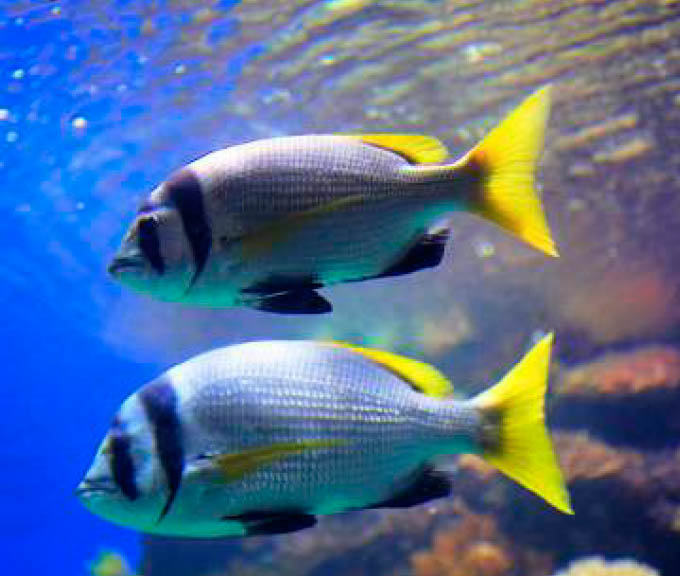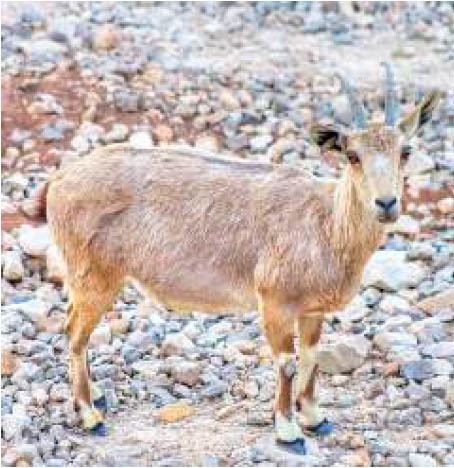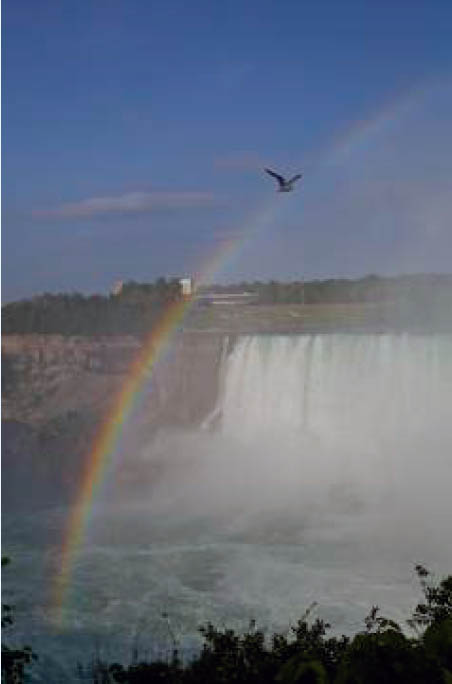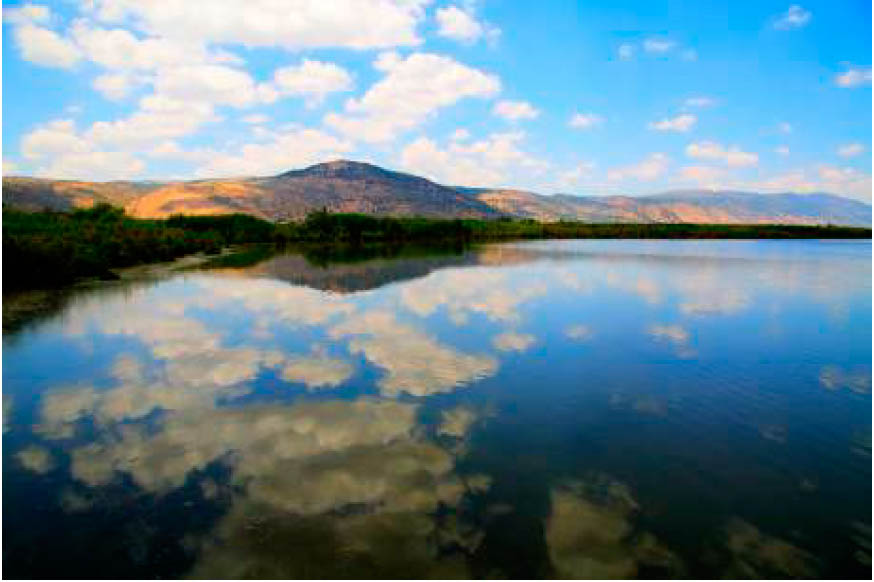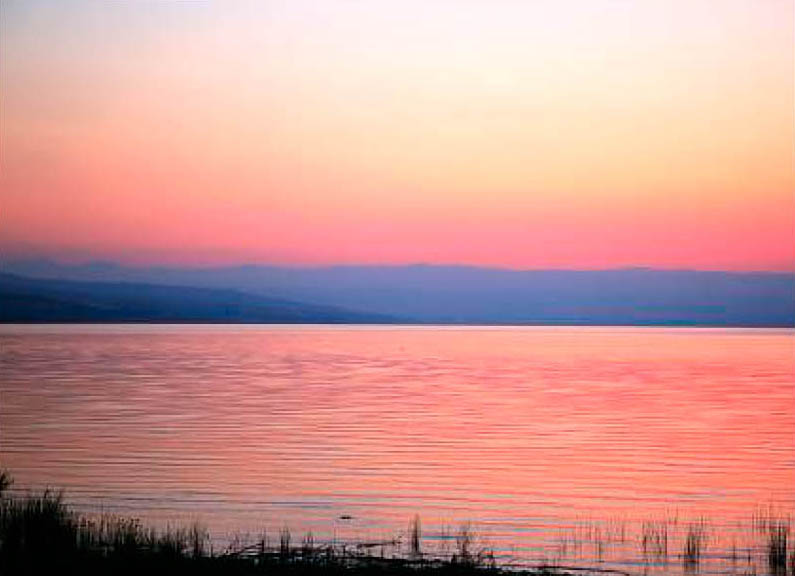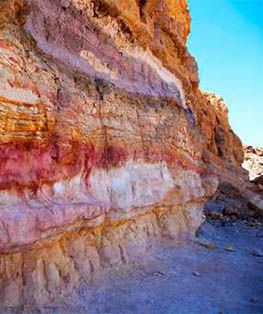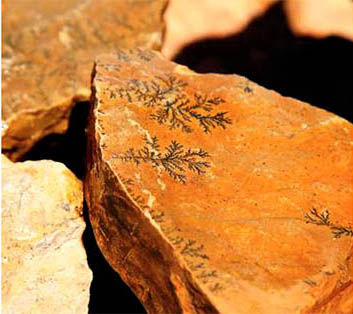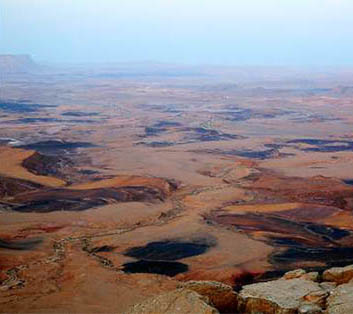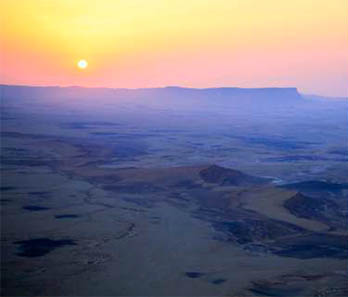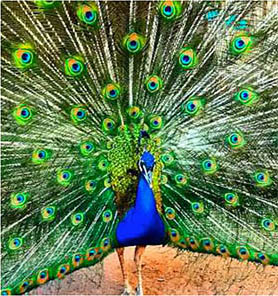One of the sections of the Tiferet exhibit is devoted entirely to the area of Mitzpe Ramon, a town in the Negev desert of southern Israel. This town overlooks the Ramon Crater, which is one of the most breathtaking natural areas I have ever experienced. Many of the photos on the opposite page are of the crater, from many different vantage points—multicolored mountains and fossil rock formations inside of the crater, views at the rim of the crater, including a magnificent sunrise, and also photos of the animals that live in the area, such as the sure-footed ibex that becomes camouflaged among the rocks. The Ramon crater is technically a maktesh. The difference is that a crater is formed either by a meteor or volcanic eruption, while a maktesh is formed by erosion. The Maktesh Ramon has steep walls of resistant rock surrounding a deep closed valley. This valley has limited vegetation and soil, and contains a variety of different colored rocks, and diverse flora and fauna. In the maktesh, the hard outer layer of rock covers softer rocks. Erosion removes the softer minerals relatively quickly, and they are washed away from the harder rock, while the harder rock eventually collapses under its own weight, forming the crater-like valley structure! Mitzpe Ramon also has some of the darkest, most easily accessible night skies in Israel, with very little light pollution. The sky is star studded, and the Milky Way is bright and easily visible. On the night we were there, while looking through telescopes, we saw Jupiter and its four largest moons, as well as Saturn, with its rings clearly visible. It was amazing!
The feeling of awe that I experienced during my visit to this unique, natural wonder is difficult to describe in words. It is breathtaking, exhilarating, magnificent, and elicits a feeling of being very present in the moment. It is the energy of tiferet. In addition to the Mitzpe Ramon photos, the opposite page includes a gorgeous sunrise at the Sea of Galilee, colorful fauna from Eilat, as well as awe-inspiring photos from nature closer to home—a magnificent rainbow from Niagara Falls, and a sand formation from Robert Moses Beach that looks like a sunflower, titled “God’s Paintbrush.”
A study on awe, done in 2015, found that experiencing a sense of awe promotes altruism, loving-kindness and magnanimous behavior. The researchers describe awe as “that sense of wonder we feel in the presence of something vast that transcends our understanding of the world.” We often experience awe in nature, as well as in response to religion, art, and music. Abraham Maslow described the experience of awe as a peak experience, when a person is in harmony with oneself and their surroundings. The vastness and grandeur of nature can also make us feel relatively small, which may humble us, and give us a better perspective on what’s important versus some of the “small stuff” that we can let go of. In nature, many people feel a deep and instant connection with God.
The Tiferet exhibit continues to be on a journey of its own, being displayed in several Long Island synagogues. It has sparked both a children’s and adults’ hands-on learning about Israel through “Photos Curating Workshops,” as well as teacher educational workshops on how to use photos as prompts for learning.
I hope that Tiferet has, in some way, inspired you—perhaps, to learn more about Israel, to plan and take a trip there, to be inspired in your own photography or other creative endeavors, and to notice and focus more on the beauty surrounding you in the world. Once you’re tuned in to it, tiferet is always there as a constant, no matter where you are or what else is occurring around you. You just have to notice it, and focus on it with your own personal lens.

